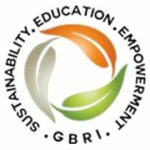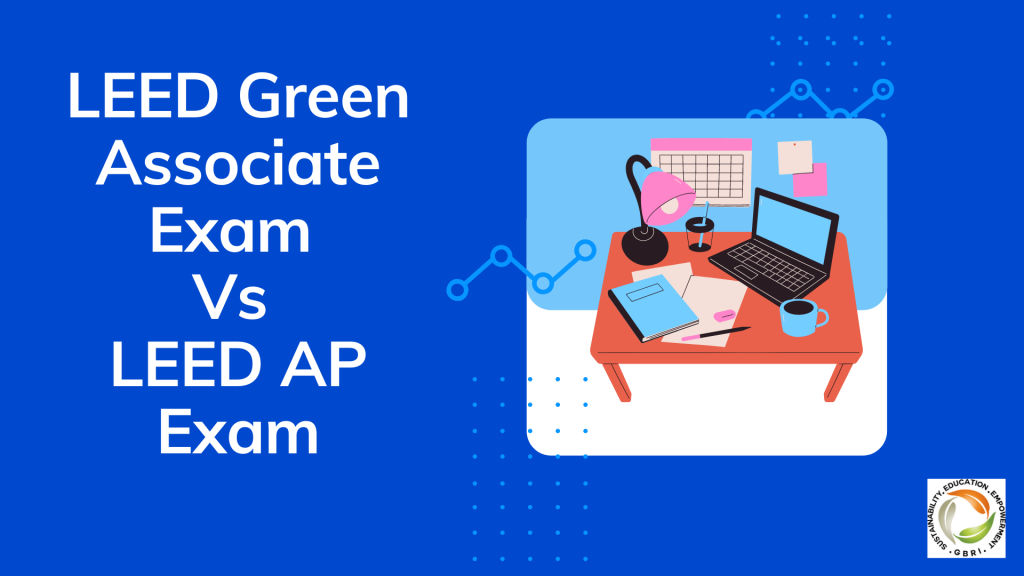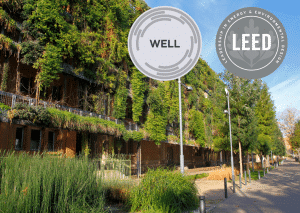In today’s world, when people across borders are suffering from the effects of climate change and are trying to limit its impact by adopting eco-friendly lifestyles, the term ‘green building’ is not unheard of. Even if you are not an architect, builder or realtor, chances are high that you have heard about the concept of sustainability and sustainable architecture.
Now we all know that buildings are huge consumers of natural resources, generate a lot of waste and are high on carbon emissions. As a result, they have a massive impact on the planet and also on the health and well being of people at large.
Buildings might last 50, 75 or even more years and during their entire lifecycle, they keep consuming resources and generating waste and planet-harming emissions.
As more and more people are becoming aware of the environmental impact of these concrete structures, the sense of urgency to limit the damage inflicted by them is also rising. This is why the concept of green building is gaining so much popularity globally.
Green building, or sustainable design, is the practice of increasing the efficiency with which buildings and their sites use energy, water, and materials, and of reducing impacts on human health and the environment for the entire lifecycle of a building. Green-building concepts extend beyond the walls of buildings and include site planning, community and land-use planning issues as well.
Now in order to gauge how ‘green’ a building is, there are various green building rating systems in place. The most popular of them all globally is LEED.
The acronym LEED stands for Leadership in Energy and Environmental Design, it is the most widely used green building rating system in the world. It has been developed by the US Green Building Council and provides third-party verification that a building meets all the essential criteria of green design.
LEED applies to both commercial as well as residential buildings.
There are three separate organizations involved in the LEED process:
- USGBC: deals with outlining and establishing the LEED standards.
- GBCI: (Green Business Certification Inc) runs the LEED Accreditation programs for people and LEED Certification for buildings.
- Prometric: testing centers that administer the exams.
These days, you can also take LEED exams online through a remotely proctored, internet-enabled location of your choice, using Prometric’s ProProctor tool.
LEED Certification Levels
The U.S. Green Building Council’s LEED rating system currently has 4 LEED certification levels tailored to specific building types inclusive of new construction, renovation, and existing buildings.
Projects pursuing LEED certification earn points across several categories: energy savings, water efficiency, carbon emissions reduction, improved indoor environmental quality, innovation, location and transportation, sustainable sites, and stewardship of resources and sensitivity to their impacts.
Based on the number of points achieved, a project then earns one of four LEED rating levels:
- Certified (40-49 points),
- Silver (50-59 points),
- Gold (60-79 points),
- Platinum (80+ points)
The LEED Platinum level certification achieves the highest honor and the LEED Certified level achieves basic, fundamental performance.
Any professional interested in LEED green buildings usually studies the LEED standards in preparation for an accreditation exam. Upon passing the exam, the individual earns a LEED Green Associate credential or a LEED Accredited Professional (LEED AP) credential (depending upon the type of exam undertaken) and is then said to be LEED accredited.
LEED Accreditation
“LEED certification” is sometimes used interchangeably to refer to both buildings and LEED professionals. Officially, people earn LEED accreditation (or “LEED credentials”) and buildings are LEED certified.
There are two ways to become a LEED accredited professional –
- Take the Green Associate Exam and become a LEED Green Associate.
- Identify your area of expertise and accordingly take the LEED AP exam to earn the LEED AP credential.
LEED Credentials
As mentioned above, there are two main LEED credentials that require LEED aspirants to take the following two exams according to their preference:
LEED Green Associate
The LEED Green Associate credential is for people who have a documented, up-to-date understanding of the most current green building principles and practices. This is basically a foundational credential, and for many it is the first step before earning advanced credentials such as the LEED AP with specialty.
LEED AP with specialty
A LEED Accredited Professional (AP) credential signifies an advanced depth of knowledge of green building practices and by extension, an even greater commitment towards sustainable building. Earning a LEED AP credential requires specializing in a specific field. You can specialize in each of the different rating systems of LEED that are listed below –
- LEED AP Building Design + Construction – This rating system includes guidelines for new buildings and old buildings undergoing major renovations.
- LEED AP Operations + Maintenance – This category can be used by building owners and operators to measure operations and maintenance as well as make minor improvements.
- LEED AP Interior Design + Construction – This rating system was designed specifically for tenants leasing a portion of a larger building.
- LEED AP Neighborhood Development – This category integrates the principles of smart growth, urbanism, and green building into the first national program for neighborhood design.
- LEED AP Homes – This was specifically designed for single and multi-family residential structures that are three stories or less.
Please note that the first step to becoming a LEED AP is to earn the LEED Green Associate credential. Once you have passed the LEED Green Associate exam, you can choose to pursue one of the above mentioned five LEED AP specialty credentials. Candidates can also take both LEED Green Associate and LEED AP exam in one sitting, or separately.
LEED Exams – A Short Introduction
The USGBC has published a high-level outline of LEED knowledge areas in the form of the Candidate Handbook. The information contained in it is pretty useful to people who are new to LEED.
According to the USGBC Candidate Handbook, the LEED credentialing exams assess a candidate’s abilities at three cognitive levels: Recall, Application, and Analysis.
- Recall Questions: These questions assess a candidate’s ability to recall factual material, such as numerical thresholds and precedent-setting standards.
- Application Questions: These questions provide the candidate with a novel problem or scenario that the candidate can solve using familiar principles or procedures.
- Analysis Questions: These questions assess a candidate’s ability to break the problem down into its components to create a solution. The candidate must not only recognize the different elements of the problem but must also evaluate the relationship or interactions of these elements.
The exams are computer-based and administered by Prometric, a third-party test-proctoring company with testing centers in nearly every major city in the world.
If you are living in the US, you are sure to find the center nearby as there are usually several in each major city. If you’re in an area where there is no Prometric testing center, you can contact the USGBC for alternative testing methods.
The exams are available six days a week (Monday-Saturday, 8 a.m. to 8 p.m.) at any Prometric testing center. Because the exam is digital, candidates will know their score immediately after they submit their responses.
Please note that just the Candidate Handbook is not enough if you truly want to pass the LEED exams. In order to get an in-depth knowledge of the LEED categories and concepts, you can access the study materials offered by USGBC’s official Education Partners like the Green Building Research Institute (GBRI).
With GBRI’s study materials, you can earn your LEED Green Associate credential in as little as 5 weeks. Based on your schedule, attend the 4 week instructor-led live exam prep sessions OR utilize self-paced online on-demand exam prep modules.
GBRI’s LEED v4 Green Associate Exam Preparation Package includes:
- 5 Simulated Practice Exams/Mock Tests
- 700+ Test Questions With Answer Explanations
- Study Guide, Live Study Sessions
- Self- Paced Online Study Modules-Flash Cards, Memory Charts and MP3 Voice Files
- Remote Tutor Assistance
GBRI also offers impressive study materials to pass the LEED AP BD+C and LEED AP O+M exams. These include:
- Online Study Modules : Access on any device 24×7 for one full year
- Practice exams: Hundreds of practice test questions with explanations for each question to help you review and solidify your understanding
- Online on-demand access: Access to classroom sessions and on demand modules for 1 full year
- Flash Cards so that you can conveniently study on the go
- MP3 Audio Files: Study anytime by loading MP3 audio files to your phone or music player
- Memory Charts to make sure you pass the exam on the first try itself
- Reference materials to the supplemental study materials you will need to review for your exam (printable)
Please note that purchase of BD+C or O+M package from GBRI includes LEED Green Associate package as well.
LEED GA vs. LEED AP Exam Difficulty
LEED exams, whether it is the LEED Green Associate or the LEED AP, are not exactly easy. Having said that, their difficulty level basically depends on your work experience and familiarity with the subject matter.
Although studying for the LEED AP specialty exam requires a much thorough understanding, learning and memorizing of LEED prerequisites, terminologies and credits as compared to the LEED Green Associate exam, taking the latter is also not a walk in the park.
The LEED Green Associate exam will test your high-level knowledge and ability to recall basic facts about the LEED Rating System structure. The LEED AP exams, on the other hand, will require more technical understanding of how to earn points on a LEED building project. At the LEED AP level, you are asked to apply the basic principles from LEED Green Associate to theoretical projects.
Unfortunately, the USGBC does not reveal the official pass rates of both these exams. However, what we do know is:
- You have to score 170 out of 200 to pass but questions are weighted differently, so there’s no magic number as to how many questions you have to answer correctly.
- Regardless of whether you take the LEED GA or LEED AP exam, you will be asked about the LEED credit categories.
- The number of questions per category may change, as well as the depth of the content.
- There are 15 unscored questions on the exam (that USGBC will evaluate for experimental purposes), but you won’t know which questions are scored and which are unscored.
- There are 1000+ questions in the pool to form your 100-question exam, so no two exams will have the same questions in the same order.
In order to successfully pass both these exams, you should have a fair idea of what to expect, and prepare well beforehand. Study materials will help you understand what to expect in the exam, but remember that studying well depends solely on you.
Also, it is advisable to memorize all the acronyms, numbers, and credits that need to be known about a week from the actual test. This will help you recall the figures easily during the exam. If you spread your study time out over a long time period, your ability to recall this information can be slightly unlikely.
Also Read: LEED AP Vs WELL AP: Which is More Popular?











